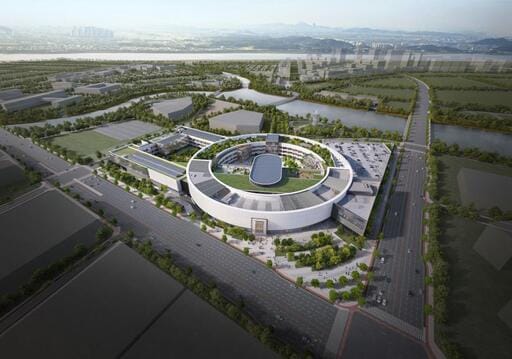Busan Advances Seobusan Medical Center with Preferred Bidder Selection

Busan, South Korea - The City of Busan has taken a significant step forward in the construction of the Seobusan Medical Center, announcing the selection of "(tentatively named) Seobusan Healing Planet Co., Ltd." as the preferred bidder for the project. This decision was revealed during a result report meeting held at the proposed construction site for the medical center.
The Seobusan Medical Center project, initially delayed due to funding shortages, has gained new momentum following successful efforts by the city to secure increased funding. In October of last year, the project faced a setback when the initial bidding process failed due to insufficient budget. However, the City of Busan engaged in proactive negotiations with the Ministry of Economy and Finance, which resulted in an increase in the project’s budget ceiling. This increase enabled the city to move forward with the selection of the preferred bidder.
Busan Mayor Park Heong-joon, who attended the report meeting alongside lawmaker Lee Seong-kweun and Saha District Mayor Lee Gap-jun, emphasized the significance of this development. He stated, “After nearly a decade of slow progress, the Seobusan Medical Center project has finally entered a crucial phase with the selection of the preferred bidder. We are committed to ensuring that the construction is completed by 2028, so that the medical center can serve as a vital public healthcare facility for the residents of Seobusan.”
The preferred bidder, Seobusan Healing Planet Co., Ltd., was selected after successfully passing a rigorous evaluation process. The company's proposal, submitted on July 31, received a score of 780.90 out of 1,000 points, meeting the required standards in both technical and financial categories.
The Seobusan Medical Center project, which has been in the works since 2015, has faced various challenges over the years. However, the project has overcome significant obstacles, including the acquisition of the necessary site in Saha District earlier this year. Despite the challenges posed by rising construction costs, which have affected public projects nationwide, the city managed to secure an additional 7.841 billion KRW, bringing the total budget for the project to 85.841 billion KRW.
The Seobusan Medical Center will be constructed using a Build-Transfer-Lease (BTL) public-private partnership model. The facility will include a 300-bed general hospital, covering a total floor area of 32,445 square meters, and will provide essential medical services tailored to the needs of the local community. The hospital will be equipped with advanced medical technology, including CT and MRI machines, solidifying its role as a cornerstone public healthcare facility for the Seobusan region.
BTL, which stands for Build-Transfer-Lease, is a public-private partnership model often used in large infrastructure projects. In this arrangement, a private company is responsible for financing, designing, and constructing a facility. Once the construction is completed, ownership of the facility is transferred to the public sector. The private company then leases the facility back from the public sector, typically taking on the responsibility for its operation and maintenance over the lease period. During this time, the public sector makes regular lease payments to the private company. This model allows the public sector to benefit from private sector expertise and financing while retaining ownership of the infrastructure.
Construction of the Seobusan Medical Center is scheduled to commence in 2026, with completion expected by 2028. The city will continue to work closely with the selected bidder to ensure the project progresses on schedule, with the ultimate goal of creating a medical center that meets the highest standards of healthcare and serves the needs of the Seobusan community.
This project is a key component of Busan’s broader strategy to enhance public healthcare infrastructure, particularly in addressing the increasing demand for emergency and specialized medical services in the region. The Seobusan Medical Center is expected to play a critical role in improving the city’s capacity to respond to emergencies, disasters, and infectious disease outbreaks, ensuring the health and safety of its residents.


